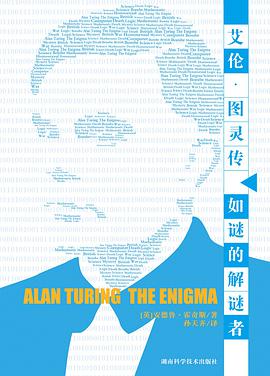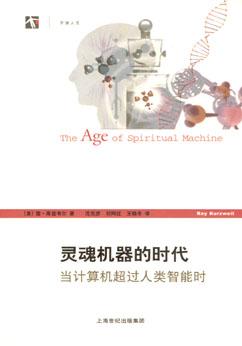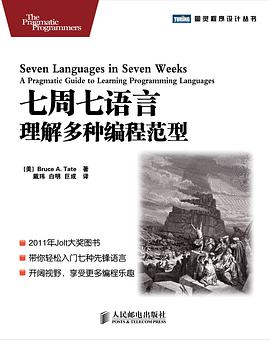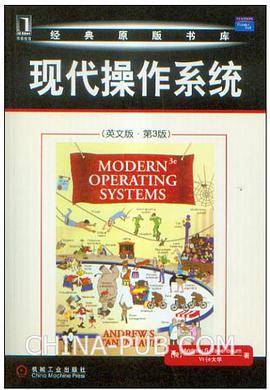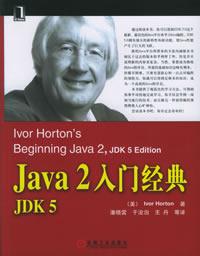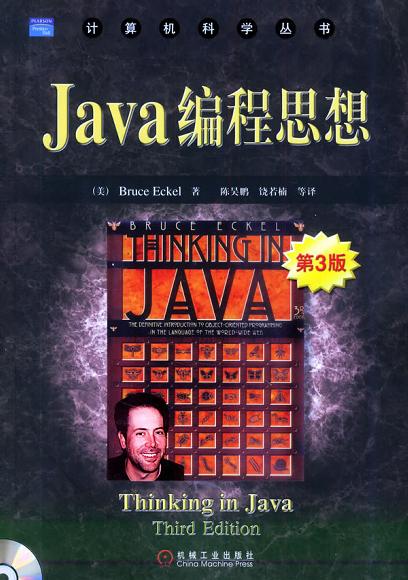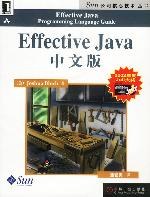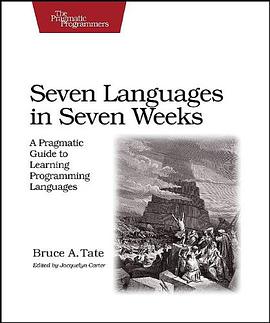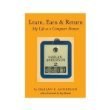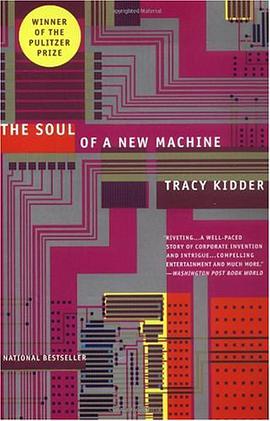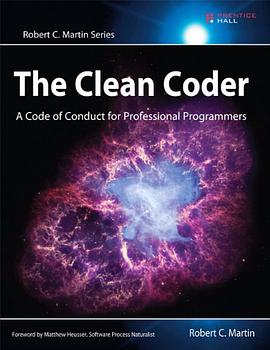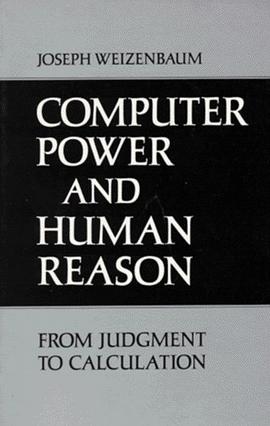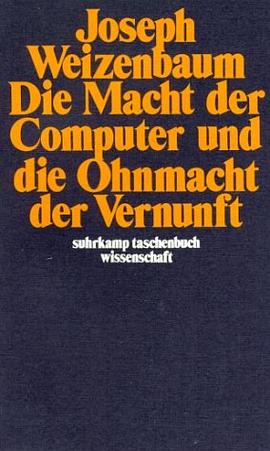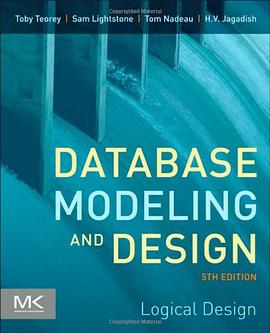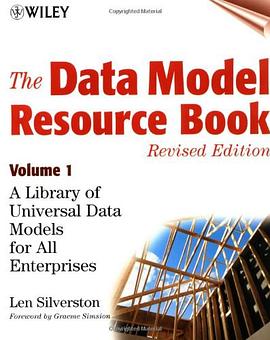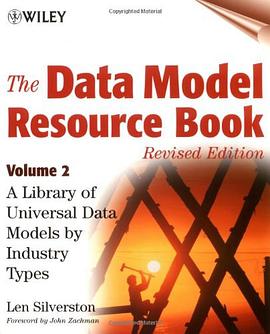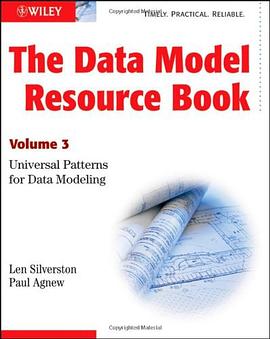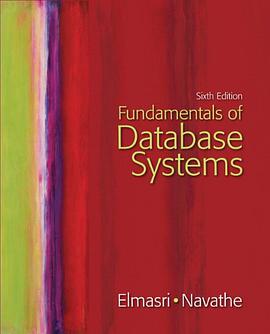CS
灵魂机器的时代:当计算机超过人类智能时 豆瓣
作者:
(美)库兹韦尔
/
Ray Kurzweil
译者:
沈志彦等
上海译文出版社
2002
- 6
信息技术、生物工程、纳米材料是当代科技三大前沿,到21世纪,这三大技术将合力打造出的新的智能机器,将重塑人类的大脑和躯体。作者大胆预测:到21世纪,人类和机器将难分彼此,人类将不再是万物之灵。电脑将比人脑有高一万倍的智能。机器不仅具有智能,而且具有灵魂,将具有人类的意识、情绪和欲望;而人类身体中植入了用生物工程和纳米材料制成的电脑芯片、人造器官,将比现代人类更长寿,有更强的学习能力,更灵敏的视觉和听觉,而虚拟现实有可能使人机发生“恋爱”……这不是科幻小说,更不是天方夜谭,这是库兹韦尔为我们描述的“灵魂机器的时代”。
库兹韦尔在书后的大事年表中展示了宇宙演化、生命进化和科技发展的历程,使读者对世界科技的发展过程和未来走向一目了然。
感谢余秋雨先生为本书中文版写的精彩序文,它为我们如何阅读这本万花筒般的书指明了路径。
库兹韦尔在书后的大事年表中展示了宇宙演化、生命进化和科技发展的历程,使读者对世界科技的发展过程和未来走向一目了然。
感谢余秋雨先生为本书中文版写的精彩序文,它为我们如何阅读这本万花筒般的书指明了路径。
七周七语言 豆瓣
Seven Languages in Seven Weeks: A Pragmatic Guide to Learning Programming Languages
8.8 (19 个评分)
作者:
[美] Bruce A. Tate
译者:
巨成
/
戴玮
…
人民邮电出版社
2012
- 5
从计算机发展史早期的Cobol、Fortran到后来的C、Java,编程语言的家族不断壮大。除了这些广为人知的语言外,还涌现了Erlang、Ruby等后起之秀,它们虽被喻为小众语言,但因其独特性也吸引了为数不少的追随者。
Bruce A. Tate是软件行业的一名老兵,他有一个宏伟目标:用一本书的篇幅切中要害地探索七种不同的语言。本书就是他的成果。书中介绍了Ruby、Io、Prolog、Scala、Erlang、Clojure和Haskell这七种语言,关注每一门语言的精髓和特性,重点解决如下问题:这门语言的类型模型是什么,编程范式是什么,如何与其交互,有哪些决策构造和核心数据结构,有哪些独特的核心特性。
在这个飞速发展的信息时代,程序员仅仅掌握甚至精通一门语言是远远不够的。了解多门语言蕴涵的思维方式,在编码中互相借鉴,再挑出一两门对自己口味的语言深入学习,这些已经成为在软件行业中安身立命之本。从这个意义上说,每个程序员都应该看看这本书。
Bruce A. Tate是软件行业的一名老兵,他有一个宏伟目标:用一本书的篇幅切中要害地探索七种不同的语言。本书就是他的成果。书中介绍了Ruby、Io、Prolog、Scala、Erlang、Clojure和Haskell这七种语言,关注每一门语言的精髓和特性,重点解决如下问题:这门语言的类型模型是什么,编程范式是什么,如何与其交互,有哪些决策构造和核心数据结构,有哪些独特的核心特性。
在这个飞速发展的信息时代,程序员仅仅掌握甚至精通一门语言是远远不够的。了解多门语言蕴涵的思维方式,在编码中互相借鉴,再挑出一两门对自己口味的语言深入学习,这些已经成为在软件行业中安身立命之本。从这个意义上说,每个程序员都应该看看这本书。
现代操作系统 豆瓣
Modern Operating System
作者:
[美国] Andrew S·Tanenbaum
机械工业出版社
2009
- 4
《现代操作系统(英文版第3版)》内容为:Tanenbaum教授作为三个操作系统的设计师或联合设计师,具有长期设计开发操作系统的经验,从而把其对理论的深入理解和具体实践融入书中,使《现代操作系统(英文版第3版)》成为操作系统领域的经典之作。在《现代操作系统(英文版第3版)》第3版中,作者深入讨论了许多主题,包括:进程,线程,存储管理,文件系统,I/O死锁,接口设计,多媒体,性能权衡。以及有关操作系统设计的最新趋势。书中不仅涵盖了现代操作系统的原理和实践,而且特别关注了Linux操作系统,WindowsVista操作系统、嵌入式操作系统、实时操作系统以及多媒体操作系统。
·涉及Windows Vista以及最新的Linux/Unix操作系统。
·用一整章(第12章)的篇幅对用于移动设备的Syrnbian操作系统进行案例分析。
·涵盖更多,更新的安全方面的内容。
·重新组织内容,尽早论述关键抽象概念。
·给出与未来操作系统发展有关的新研究成果。
·更新和增加了编程练习。
·在线操作系统练习(http://www prenhall.com/anenbaum/details.html)采用主流windows操作系统以及开源工具。
·包括操作系统模拟练习。
海报:
·涉及Windows Vista以及最新的Linux/Unix操作系统。
·用一整章(第12章)的篇幅对用于移动设备的Syrnbian操作系统进行案例分析。
·涵盖更多,更新的安全方面的内容。
·重新组织内容,尽早论述关键抽象概念。
·给出与未来操作系统发展有关的新研究成果。
·更新和增加了编程练习。
·在线操作系统练习(http://www prenhall.com/anenbaum/details.html)采用主流windows操作系统以及开源工具。
·包括操作系统模拟练习。
海报:
Java2入门经典 豆瓣
作者:
霍顿
译者:
潘晓雷
/
于浚泊
…
机械工业出版社
2006
- 1
《Java2入门经典》(JDK5)综合介绍了使用J2SE(Java 2 Standard Edition)5.0或更高版本开发动态程序的过程,阐述了Java语言的各个方面,包括Java语言结构和工作原理的基本知识,用大量的实例讲述如何开发功能齐全的Java应用程序,以期帮助读者掌握Java语言的最新特性和Java类库中主要的功能包,积累Java应用环境的使用经验,并在核心技术领域打下坚实的基础。《Java2入门经典》(JDK5)系统全面、浅显易懂,非常适合没有任何编程经验的初学者阅读,也可作为软件开发人员和高校师生的必备参考书。
Java编程思想 豆瓣
Thinking in Java
作者:
[美] Bruce Eckel
译者:
陈昊鹏
/
饶若楠
机械工业出版社
2005
- 9
本书赢得了全球程序员的广泛赞誉,即使是最晦涩的概念,在Bruce Eckel的文字亲和力和小而直接的编程示例面前也会化解于无形。从Java的基础语法到最高级特性(深入的面向对象概念、多线程、自动项目构建、单元测试和调试等),本书都能逐步指导你轻松掌握。
从本书获得的各项大奖以及来自世界各地的读者评论中,不难看出这是一本经典之作。本书的作者拥有多年教学经验,对C、C++以及Java语言都有独到、深入的见解,以通俗易懂及小而直接的示例解释了一个个晦涩抽象的概念。本书共22章,包括操作符、控制执行流程、访问权限控制、复用类、多态、接口、通过异常处理错误、字符串、泛型、数组、容器深入研究、Java I/O系统、枚举类型、并发以及图形化用户界面等内容。这些丰富的内容,包含了Java语言基础语法以及高级特性,适合各个层次的Java程序员阅读,同时也是高等院校讲授面向对象程序设计语言以及Java语言的绝佳教材和参考书。
从本书获得的各项大奖以及来自世界各地的读者评论中,不难看出这是一本经典之作。本书的作者拥有多年教学经验,对C、C++以及Java语言都有独到、深入的见解,以通俗易懂及小而直接的示例解释了一个个晦涩抽象的概念。本书共22章,包括操作符、控制执行流程、访问权限控制、复用类、多态、接口、通过异常处理错误、字符串、泛型、数组、容器深入研究、Java I/O系统、枚举类型、并发以及图形化用户界面等内容。这些丰富的内容,包含了Java语言基础语法以及高级特性,适合各个层次的Java程序员阅读,同时也是高等院校讲授面向对象程序设计语言以及Java语言的绝佳教材和参考书。
Effective Java 中文版 豆瓣
作者:
[美] Joshua Bloch
译者:
潘爱民
机械工业出版社
2003
- 1
本书介绍了在Java编程中57条极具实用价值的经验规则,这些经验规则涵盖了大多数开发人员每天所面临的问题的解决方案。通过对Java平台设计专家所使用的技术的全面描述,揭示了应该做什么,不应该做什么才能产生清晰、健壮的高效的代码。
本书中的每条规则都以简短、独立的小文章形式出现,这些小文章包含了详细而精确的建议,以及对语言中许多细微之处的深入分析,并通过例子代码加以进一步说明。贯穿全书的是通用的语言用法的设计模式,以及一些具有启发意义的技巧的技术。
本书中的每条规则都以简短、独立的小文章形式出现,这些小文章包含了详细而精确的建议,以及对语言中许多细微之处的深入分析,并通过例子代码加以进一步说明。贯穿全书的是通用的语言用法的设计模式,以及一些具有启发意义的技巧的技术。
Seven Languages in Seven Weeks 豆瓣 Goodreads
作者:
[美] Bruce A·Tate
Pragmatic Bookshelf
2010
- 10
Ruby, Io, Prolog, Scala, Erlang, Clojure, Haskell. With Seven Languages in Seven Weeks, by Bruce A. Tate, you'll go beyond the syntax-and beyond the 20-minute tutorial you'll find someplace online. This book has an audacious goal: to present a meaningful exploration of seven languages within a single book. Rather than serve as a complete reference or installation guide, Seven Languages hits what's essential and unique about each language. Moreover, this approach will help teach you how to grok new languages.
For each language, you'll solve a nontrivial problem, using techniques that show off the language's most important features. As the book proceeds, you'll discover the strengths and weaknesses of the languages, while dissecting the process of learning languages quickly--for example, finding the typing and programming models, decision structures, and how you interact with them.
Among this group of seven, you'll explore the most critical programming models of our time. Learn the dynamic typing that makes Ruby, Python, and Perl so flexible and compelling. Understand the underlying prototype system that's at the heart of JavaScript. See how pattern matching in Prolog shaped the development of Scala and Erlang. Discover how pure functional programming in Haskell is different from the Lisp family of languages, including Clojure.
Explore the concurrency techniques that are quickly becoming the backbone of a new generation of Internet applications. Find out how to use Erlang's let-it-crash philosophy for building fault-tolerant systems. Understand the actor model that drives concurrency design in Io and Scala. Learn how Clojure uses versioning to solve some of the most difficult concurrency problems.
It's all here, all in one place. Use the concepts from one language to find creative solutions in another-or discover a language that may become one of your favorites.
For each language, you'll solve a nontrivial problem, using techniques that show off the language's most important features. As the book proceeds, you'll discover the strengths and weaknesses of the languages, while dissecting the process of learning languages quickly--for example, finding the typing and programming models, decision structures, and how you interact with them.
Among this group of seven, you'll explore the most critical programming models of our time. Learn the dynamic typing that makes Ruby, Python, and Perl so flexible and compelling. Understand the underlying prototype system that's at the heart of JavaScript. See how pattern matching in Prolog shaped the development of Scala and Erlang. Discover how pure functional programming in Haskell is different from the Lisp family of languages, including Clojure.
Explore the concurrency techniques that are quickly becoming the backbone of a new generation of Internet applications. Find out how to use Erlang's let-it-crash philosophy for building fault-tolerant systems. Understand the actor model that drives concurrency design in Io and Scala. Learn how Clojure uses versioning to solve some of the most difficult concurrency problems.
It's all here, all in one place. Use the concepts from one language to find creative solutions in another-or discover a language that may become one of your favorites.
Learn, Earn & Return, My Life as a Computer Pioneeer 豆瓣
作者:
Harlan E. Anderson
Locust Press
2009
The Soul of a New Machine 豆瓣
作者:
Tracy Kidder
Back Bay Books
2000
- 6
Computers have changed since 1981, when Tracy Kidder memorably recorded the drama, comedy, and excitement of one companys efforts to bring a new microcomputer to market. What has not changed is the feverish pace of the high-tech industry, the go-for-broke approach to business that has caused so many computer companies to win big (or go belly up), and the cult of pursuing mind-bending technological innovations. The Soul of a New Machine is an essential chapter in the history of the machine that revolutionized the world in the twentieth century.
The Clean Coder 豆瓣 Goodreads
作者:
[美国] Robert C·Martin
Prentice Hall
2011
- 5
The Much-Anticipated Follow-Up to “Uncle Bob’s” Highly Praised Clean Code
Programmers who endure and succeed amidst swirling uncertainty and nonstop pressure share a common attribute: They care deeply about the practice of creating software. They treat it as a craft. They are professionals.
In The Clean Coder: A Code of Conduct for Professional Programmers, legendary software expert Robert C. Martin introduces the disciplines, techniques, tools, and practices of true software craftsmanship.
This book is packed with practical advice—about everything from estimating and coding to refactoring and testing. It covers much more than technique: It is about attitude. Martin shows how to approach software development with honor, self-respect, and pride; work well and work clean; communicate and estimate faithfully; face difficult decisions with clarity and honesty; and understand that deep knowledge comes with a responsibility to act.
Readers will learn
What it means to behave as a true software craftsman
How to deal with conflict, tight schedules, and unreasonable managers
How to get into the flow of coding, and get past writer’s block
How to handle unrelenting pressure and avoid burnout
How to combine enduring attitudes with new development paradigms
How to manage your time, and avoid blind alleys, marshes, bogs, and swamps
How to foster environments where programmers and teams can thrive
When to say “No”—and how to say it
When to say “Yes”—and what yes really means
Great software is something to marvel at: powerful, elegant, functional, a pleasure to work with as both a developer and as a user. Great software isn’t written by machines. It is written by professionals with an unshakable commitment to craftsmanship. The Clean Coder will help you become one of them—and earn the pride and fulfillment that they alone possess.
Programmers who endure and succeed amidst swirling uncertainty and nonstop pressure share a common attribute: They care deeply about the practice of creating software. They treat it as a craft. They are professionals.
In The Clean Coder: A Code of Conduct for Professional Programmers, legendary software expert Robert C. Martin introduces the disciplines, techniques, tools, and practices of true software craftsmanship.
This book is packed with practical advice—about everything from estimating and coding to refactoring and testing. It covers much more than technique: It is about attitude. Martin shows how to approach software development with honor, self-respect, and pride; work well and work clean; communicate and estimate faithfully; face difficult decisions with clarity and honesty; and understand that deep knowledge comes with a responsibility to act.
Readers will learn
What it means to behave as a true software craftsman
How to deal with conflict, tight schedules, and unreasonable managers
How to get into the flow of coding, and get past writer’s block
How to handle unrelenting pressure and avoid burnout
How to combine enduring attitudes with new development paradigms
How to manage your time, and avoid blind alleys, marshes, bogs, and swamps
How to foster environments where programmers and teams can thrive
When to say “No”—and how to say it
When to say “Yes”—and what yes really means
Great software is something to marvel at: powerful, elegant, functional, a pleasure to work with as both a developer and as a user. Great software isn’t written by machines. It is written by professionals with an unshakable commitment to craftsmanship. The Clean Coder will help you become one of them—and earn the pride and fulfillment that they alone possess.
Computer Power and Human Reason 豆瓣 Goodreads 维基数据 开放图书馆
作者:
Joseph Weizenbaum
W.H. Freeman & Company
1976
- 3
其它标题:
Computer Power and Human Reason: From Judgment to Calculation
/
Computer power and human reason
PREFACE<br > This book is only nominally about computers. In an impor-<br >tant sense, the computer is used here merely as a vehicle for m~)ving<br >certain ideas that are much more important than computers. The<br >reader who looks at a few of this book s pages and turns away in<br >fright because he spots an equation or a bit of computer jargon here<br >and there should reconsider. He may think that he does not know<br >anything about computers, indeed, that computers are too compli-<br >cated for ordinary people to understand. But a major point of this<br >book is precisely that we, all of us, have made the world too much<br >into a computer, and that this remaking of the world in the image of<br >the computer started long before there were any electronic comput-<br >ers. Now that we have computers, it becomes somewhat easier to see<br >this imaginative transformation we have worked on the world. Now<br >we can use the computer itself--that is the idea of the computer--as<br >a metaphor to help us understand what we have done and are doing.<br > We are all used to hearing that the computer is a powerful<br >new instrument. But few people have any idea where the power of a<br >computer comes from. Chapters I to III are devoted to explaining just<br >QQ<br ><br >
Die Macht der Computer und die Ohnmacht der Vernunft 豆瓣
作者:
Joseph Weizenbaum
Suhrkamp Verlag
1978
Modern Systems Analysis and Design 豆瓣
HOFFER,GEORGE,VALACICH
作者:
Jeffrey A. Hoffer
/
Joey George
…
PEARSON
2010
- 1
The methods and principles of systems development.
Modern Systems Analysis and Design uses a practical, rather than technical, approach to help readers learn the methods and principles of systems development.
The sixth edition has been streamlined and updated to reflect the latest trends, information, and practices in the discipline.
Modern Systems Analysis and Design uses a practical, rather than technical, approach to help readers learn the methods and principles of systems development.
The sixth edition has been streamlined and updated to reflect the latest trends, information, and practices in the discipline.
Database Modeling and Design, Fifth Edition 豆瓣
作者:
Toby J. Teorey
/
Sam S. Lightstone
…
Morgan Kaufmann
2011
- 2
Database systems and database design technology have undergone significant evolution in recent years. The relational data model and relational database systems dominate business applications; in turn, they are extended by other technologies like data warehousing, OLAP, and data mining. How do you model and design your database application in consideration of new technology or new business needs?
In the extensively revised fifth edition, you'll get clear explanations, lots of terrific examples and an illustrative case, and the really practical advice you have come to count on-- with design rules that are applicable to any SQL-based system . But you'll also get plenty to help you grow from a new database designer to an experienced designer developing industrial-sized systems.
In-depth detail and plenty of real-world, practical examples throughout Loaded with design rules and illustrative case studies that are applicable to any SQL, UML, or XML-based system Immediately useful to anyone tasked with the creation of data models for the integration of large-scale enterprise data.
In the extensively revised fifth edition, you'll get clear explanations, lots of terrific examples and an illustrative case, and the really practical advice you have come to count on-- with design rules that are applicable to any SQL-based system . But you'll also get plenty to help you grow from a new database designer to an experienced designer developing industrial-sized systems.
In-depth detail and plenty of real-world, practical examples throughout Loaded with design rules and illustrative case studies that are applicable to any SQL, UML, or XML-based system Immediately useful to anyone tasked with the creation of data models for the integration of large-scale enterprise data.
The Data Model Resource Book 豆瓣
作者:
Len Silverston
Wiley
2001
- 3
A quick and reliable way to build proven databases for core business functions
Industry experts raved about The Data Model Resource Book when it was first published in March 1997 because it provided a simple, cost-effective way to design databases for core business functions. Len Silverston has now revised and updated the hugely successful First Edition, while adding a companion volume to take care of more specific requirements of different businesses. Each volume is accompanied by a CD-ROM, which is sold separately. Each CD-ROM provides powerful design templates discussed in the books in a ready-to-use electronic format, allowing companies and individuals to develop the databases they need at a fraction of the cost and a third of the time it would take to build them from scratch.
Updating the data models from the First Edition CD-ROM, this resource allows database developers to quickly load a core set of data models and customize them to support a wide range of business functions.
Industry experts raved about The Data Model Resource Book when it was first published in March 1997 because it provided a simple, cost-effective way to design databases for core business functions. Len Silverston has now revised and updated the hugely successful First Edition, while adding a companion volume to take care of more specific requirements of different businesses. Each volume is accompanied by a CD-ROM, which is sold separately. Each CD-ROM provides powerful design templates discussed in the books in a ready-to-use electronic format, allowing companies and individuals to develop the databases they need at a fraction of the cost and a third of the time it would take to build them from scratch.
Updating the data models from the First Edition CD-ROM, this resource allows database developers to quickly load a core set of data models and customize them to support a wide range of business functions.
The Data Model Resource Book, Vol. 2 豆瓣
作者:
Len Silverston
Wiley
2001
- 3
A quick and reliable way to build proven databases for core business functions
Industry experts raved about The Data Model Resource Book when it was first published in March 1997 because it provided a simple, cost-effective way to design databases for core business functions. Len Silverston has now revised and updated the hugely successful First Edition, while adding a companion volume to take care of more specific requirements of different businesses. Each volume is accompanied by a CD-ROM, which is sold separately. Each CD-ROM provides powerful design templates discussed in the books in a ready-to-use electronic format, allowing companies and individuals to develop the databases they need at a fraction of the cost and a third of the time it would take to build them from scratch.
With each business function boasting its own directory, this CD-ROM provides a variety of data models for specific implementations in such areas as financial services, insurance, retail, healthcare, universities, and telecom.
Industry experts raved about The Data Model Resource Book when it was first published in March 1997 because it provided a simple, cost-effective way to design databases for core business functions. Len Silverston has now revised and updated the hugely successful First Edition, while adding a companion volume to take care of more specific requirements of different businesses. Each volume is accompanied by a CD-ROM, which is sold separately. Each CD-ROM provides powerful design templates discussed in the books in a ready-to-use electronic format, allowing companies and individuals to develop the databases they need at a fraction of the cost and a third of the time it would take to build them from scratch.
With each business function boasting its own directory, this CD-ROM provides a variety of data models for specific implementations in such areas as financial services, insurance, retail, healthcare, universities, and telecom.
The Data Model Resource Book, Vol. 3 豆瓣
作者:
Len Silverston
/
Paul Agnew
Wiley
2009
- 1
This third volume of the best-selling "Data Model Resource Book" series revolutionizes the data modeling discipline by answering the question "How can you save significant time while improving the quality of any type of data modeling effort?" In contrast to the first two volumes, this new volume focuses on the fundamental, underlying patterns that affect over 50 percent of most data modeling efforts. These patterns can be used to considerably reduce modeling time and cost, to jump-start data modeling efforts, as standards and guidelines to increase data model consistency and quality, and as an objective source against which an enterprise can evaluate data models. Praise for The Data Model Resource Book, Volume 3 "Len and Paul look beneath the superficial issues of data modeling and have produced a work that is a must for every serious designer and manager of an IT project."
—Bill Inmon, World-renowned expert, speaker, and author on data warehousing and widely recognized as the "father of data warehousing" "The Data Model Resource Book, Volume 3: Universal Patterns for Data Modeling is a great source for reusable patterns you can use to save a tremendous amount of time, effort, and cost on any data modeling effort. Len Silverston and Paul Agnewhave provided an indispensable reference of very high-quality patterns for the most foundational types of datamodel structures. This book represents a revolutionary leap in moving the data modeling profession forward."
—Ron Powell, Cofounder and Editorial Director of the Business Intelligence Network "After we model a Customer, Product, or Order, there is still more about each of these that remains to be captured, such as roles they play, classifications in which they belong, or states in which they change. The Data Model Resource Book, Volume 3: Universal Patterns for Data Modeling clearly illustrates these common structures. Len Silverston and Paul Agnew have created a valuable addition to our field, allowing us to improve the consistency and quality of our models by leveraging the many common structures within this text."
—Steve Hoberman, Best-Selling Author of Data Modeling Made Simple "The large national health insurance company I work at has actively used these data patterns and the (Universal Data Models) UDM, ahead of this book, through Len Silverston’s UDM Jump Start engagement. The patterns have found their way into the core of our Enterprise Information Model, our data warehouse designs, and progressively into key business function databases. We are getting to reuse the patterns across projects and are reaping benefits in understanding, flexibility, and time-to-market. Thanks so much."
—David Chasteen, Enterprise Information Architect "Reusing proven data modeling design patterns means exactly that. Data models become stable, but remain very flexible to accommodate changes. We have had the fortune of having Len and Paul share the patterns that are described in this book via our engagements with Universal Data Models, LLC. These data modeling design patterns have helped us to focus on the essential business issues because we have leveraged these reusable building blocks for many of the standard design problems. These design patterns have also helped us to evaluate the quality of data models for their intended purpose. Many times there are a lot of enhancements required. Too often the very specialized business-oriented data model is also implemented physically. This may have significant drawbacks to flexibility. I’m looking forward to increasing the data modeling design pattern competence within Nokia with the help of this book."
—Teemu Mattelmaki, Chief Information Architect, Nokia "Once again, Len Silverston, this time together with Paul Agnew, has made a valuable contribution to the body of knowledge about datamodels, and the act of building sound data models. As a professional data modeler, and teacher of data modeling for almost three decades, I have always been aware that I had developed some familiar mental "patterns" which I acquired very early in my data modeling experience. When teaching data modeling, we use relatively simple workshops, but they are carefully designed so the students will see and acquire a lot of these basic "patterns" — templates that they will recognize and can use to interpret different subject matter into data model form quickly and easily. I’ve always used these patterns in the course of facilitating data modeling sessions; I was able to recognize "Ah, this is just like . . . ," and quickly apply a pattern that I’d seen before. But, in all this time, I’ve never sat down and clearly categorized and documented what each of these “patterns’’ actually was in such a way that they could be easily and clearly communicated to others; Len and Paul have done exactly that. As in the other Data Model Resource Books, the thinking and writing is extraordinarily clear and understandable. I personally would have been very proud to have authored this book, and I sincerely applaud Len and Paul for another great contribution to the art and science of data modeling. It will be of great value to any data modeler."
—William G. Smith, President, William G. Smith & Associates, www.williamgsmith.com "Len Silverston and Paul Agnew’s book, Universal Patterns for Data Modeling, is essential reading for anyone undertaking commercial datamodeling. With this latest volume that compiles and insightfully describes fundamental, universal data patterns, The Data Model Resource Book series represents the most important contribution to the data modeling discipline in the last decade."
—Dr. Graeme Simsion, Author of Data Modeling Essentials and Data Modeling Theory and Practice "Volume 3 of this trilogy is a most welcome addition to Len Silverston’s two previous books in this area. Guidance has existed for some time for those who desire to use pattern-based analysis to jump-start their data modeling efforts. Guidance exists for those who want to use generalized and industry-specific data constructs to leverage their efforts. What has been missing is guidance to those of us needing guidance to complete the roughly one-third of data models that are not generalized or industry-specific. This is where the magic of individual organizational strategies must manifest itself, and Len and Paul have done so clearly and articulately in a manner that complements the first two volumes of The Data Model Resource Book. By adding this book to Volumes 1 and 2 you will be gaining access to some of the most integrated data modeling guidance available on the planet."
—Dr. Peter Aiken, Author of XML in Data Management and data management industry leader VCU/Data Blueprint
—Bill Inmon, World-renowned expert, speaker, and author on data warehousing and widely recognized as the "father of data warehousing" "The Data Model Resource Book, Volume 3: Universal Patterns for Data Modeling is a great source for reusable patterns you can use to save a tremendous amount of time, effort, and cost on any data modeling effort. Len Silverston and Paul Agnewhave provided an indispensable reference of very high-quality patterns for the most foundational types of datamodel structures. This book represents a revolutionary leap in moving the data modeling profession forward."
—Ron Powell, Cofounder and Editorial Director of the Business Intelligence Network "After we model a Customer, Product, or Order, there is still more about each of these that remains to be captured, such as roles they play, classifications in which they belong, or states in which they change. The Data Model Resource Book, Volume 3: Universal Patterns for Data Modeling clearly illustrates these common structures. Len Silverston and Paul Agnew have created a valuable addition to our field, allowing us to improve the consistency and quality of our models by leveraging the many common structures within this text."
—Steve Hoberman, Best-Selling Author of Data Modeling Made Simple "The large national health insurance company I work at has actively used these data patterns and the (Universal Data Models) UDM, ahead of this book, through Len Silverston’s UDM Jump Start engagement. The patterns have found their way into the core of our Enterprise Information Model, our data warehouse designs, and progressively into key business function databases. We are getting to reuse the patterns across projects and are reaping benefits in understanding, flexibility, and time-to-market. Thanks so much."
—David Chasteen, Enterprise Information Architect "Reusing proven data modeling design patterns means exactly that. Data models become stable, but remain very flexible to accommodate changes. We have had the fortune of having Len and Paul share the patterns that are described in this book via our engagements with Universal Data Models, LLC. These data modeling design patterns have helped us to focus on the essential business issues because we have leveraged these reusable building blocks for many of the standard design problems. These design patterns have also helped us to evaluate the quality of data models for their intended purpose. Many times there are a lot of enhancements required. Too often the very specialized business-oriented data model is also implemented physically. This may have significant drawbacks to flexibility. I’m looking forward to increasing the data modeling design pattern competence within Nokia with the help of this book."
—Teemu Mattelmaki, Chief Information Architect, Nokia "Once again, Len Silverston, this time together with Paul Agnew, has made a valuable contribution to the body of knowledge about datamodels, and the act of building sound data models. As a professional data modeler, and teacher of data modeling for almost three decades, I have always been aware that I had developed some familiar mental "patterns" which I acquired very early in my data modeling experience. When teaching data modeling, we use relatively simple workshops, but they are carefully designed so the students will see and acquire a lot of these basic "patterns" — templates that they will recognize and can use to interpret different subject matter into data model form quickly and easily. I’ve always used these patterns in the course of facilitating data modeling sessions; I was able to recognize "Ah, this is just like . . . ," and quickly apply a pattern that I’d seen before. But, in all this time, I’ve never sat down and clearly categorized and documented what each of these “patterns’’ actually was in such a way that they could be easily and clearly communicated to others; Len and Paul have done exactly that. As in the other Data Model Resource Books, the thinking and writing is extraordinarily clear and understandable. I personally would have been very proud to have authored this book, and I sincerely applaud Len and Paul for another great contribution to the art and science of data modeling. It will be of great value to any data modeler."
—William G. Smith, President, William G. Smith & Associates, www.williamgsmith.com "Len Silverston and Paul Agnew’s book, Universal Patterns for Data Modeling, is essential reading for anyone undertaking commercial datamodeling. With this latest volume that compiles and insightfully describes fundamental, universal data patterns, The Data Model Resource Book series represents the most important contribution to the data modeling discipline in the last decade."
—Dr. Graeme Simsion, Author of Data Modeling Essentials and Data Modeling Theory and Practice "Volume 3 of this trilogy is a most welcome addition to Len Silverston’s two previous books in this area. Guidance has existed for some time for those who desire to use pattern-based analysis to jump-start their data modeling efforts. Guidance exists for those who want to use generalized and industry-specific data constructs to leverage their efforts. What has been missing is guidance to those of us needing guidance to complete the roughly one-third of data models that are not generalized or industry-specific. This is where the magic of individual organizational strategies must manifest itself, and Len and Paul have done so clearly and articulately in a manner that complements the first two volumes of The Data Model Resource Book. By adding this book to Volumes 1 and 2 you will be gaining access to some of the most integrated data modeling guidance available on the planet."
—Dr. Peter Aiken, Author of XML in Data Management and data management industry leader VCU/Data Blueprint
The Relational Model for Database Management 豆瓣
作者:
E. F. Codd
Addison Wesley Publishing Company
2000
- 5
Fundamentals of Database Systems 豆瓣
作者:
Ramez Elmasri
/
Shamkant Navathe
Addison Wesley
2010
- 4
Clear explanations of theory and design, broad coverage of models and real systems, and an up-to-date introduction to modern database technologies result in a leading introduction to database systems. Intended for computer science majors, Fundamentals of Database Systems, 6/e emphasizes math models, design issues, relational algebra, and relational calculus. A lab manual and problems give students opportunities to practice the fundamentals of design and implementation. Real-world examples serve as engaging, practical illustrations of database concepts. The Sixth Edition maintains its coverage of the most popular database topics, including SQL, security, and data mining, and features increased emphasis on XML and semi-structured data.
